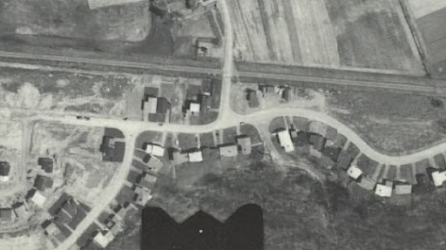Back out front
Suburban homes, intended as respites from the everyday grind of work and the “real world,” had become confinements, and in response, we began to spill out front to live and socialize with our fellow humans.
This shift in behaviour seems like an obvious coping tactic and yet the way we use and define our front yard, that liminal space between a house and the street that is privately held yet publicly exposed, is culturally significant, a kind of anthropological look at the quotidian. The changes that have occurred over the pandemic are part of a meaningful history comprising ideas and theories regarding ownership, status, race, culture and technology. Like so many other aspects of the everyday, social and cultural forces are at work, transforming how we live. Even in our own front yards.
At least in my neighbourhood, this change toward lingering out front was especially conspicuous because our homes, a swath of midcentury modern split levels in Dundas, Ontario, just outside of Hamilton, were not designed architecturally to have a “public facing” life.
The Sherwood Forest and Pleasant Valley neighbourhoods where I live (just their names indicate an aspiration for suburban Shangri-la) were developed over two decades beginning in the early 1960s and attracted a largely white professional class of homeowners – many of whom worked at McMaster University or the McMaster Medical Centre.
 |
Early houses of the Sherwood Forest neighbourhood, 1963, Dundas, Ontario. These suburban houses were built at a time when creature comforts like air conditioning and television were widely available to the middle and upper classes that lived in them. The homes were designed with a focus on the interiors and oriented toward the nature out back. The front yards were mostly decorative and idle. Aerial photograph from McMaster Library |
At the time they were built, these houses generally lacked the kind of architectural features, like a front porch, that encouraged interplay between the public space of the street and the homeowner’s private space. They functioned as “cocoons” for living away from the busy, commercial, more diverse urban downtown. Up until the early 20th century, the traditional front porch had been a steadfast feature of many Hamilton, Dundas and Ancaster homes but began to disappear when the automobile mandated that garages occupy a large part of the residential footprint and outside air became polluted with exhaust fumes, making lingering outdoors less appealing.
In addition to the large garages that adorned newly configured homes, air conditioning — which was an increasingly popular domestic comfort — eliminated the need to get outside on hot summer days to enjoy cooler temps on a shaded porch or veranda. Factors such as these led to fewer front porches included in the architectural plans of suburban homes and turned to privilege car space, most notably garages and carports, over social space at the front of the home.
Throw in the lure of television, which was becoming a common, even dominant, household feature in 1960s households, and we can see why domestic life turned inward, away from public interaction, and residential architectural design followed suit.
However, fast-forward to March 2021: Covid hits and people are forced to hunker down in their houses. As the pandemic progresses and socializing with others eventually becomes justifiable and, frankly, necessary for mental health, outside becomes the gathering spot of choice. In neighbourhoods like mine, where porches were non-existent, people adapted and created their own public-facing settings, thereby putting to use previously dormant parts of their properties. These different, more pragmatic uses for the front yard seem to indicate a new, long-lasting attitude towards this space. I see my neighbours tearing up turf, planting edible and pollinating gardens, creating sitting areas, and putting in Little Libraries or other community-minded resources in front of their houses. One resident has even offered up a portion of their property as a community garden and host weekly permaculture lessons.
Throughout this site, I will explore other aspects and histories of the front yard, how it has encouraged or discouraged a sense of community, how it has evolved into much more than just a tidy plot of manicured grass, and what this all says about us as a society.







No comments:
Post a Comment